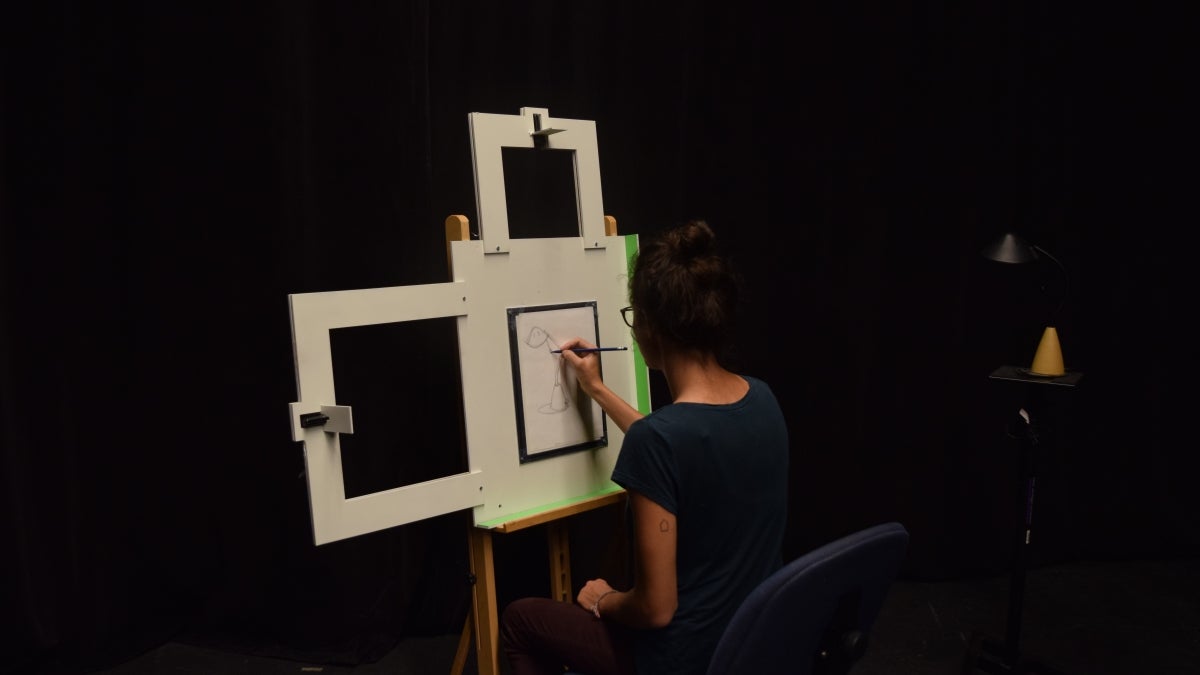ASU researchers to present at international conference on human-computer interaction

ASU researchers tracked and visualized the movement and pressure of an artist’s pencil on an easel.
A team of researchers from the School of Arts, Media and Engineering will present their work this week at the Association for Computing Machinery’s Conference on Human Factors in Computing, the premier international conference of human-computer interaction.
The team includes doctoral students Jennifer Weiler and Piyum Fernando and Assistant Professor Stacey Kuznetsov.
The team designed a research probe that unobtrusively tracks and visualizes the movement and pressure of an artist’s pencil on an easel. They conducted studies with artists and experienced art viewers to explore how sensing, visualizing and sharing these aspects of the creative process might shape art-making and -viewing experiences. In a paper titled “A Rough Sketch of the Freehand Drawing Process Blending the Line between Action and Artifact,” they explore future directions for human-computer interaction systems that sense and visualize aspects of the creative process and the social considerations for sharing and curating this intimate creative process.
All three researchers are traveling to Glasgow, Scotland, to present the paper at the 2019 ACM CHI conference.
The team is part of the School of Arts, Media and Engineering’s Social and Digital Systems transdisciplinary research collective. The SANDS group supports open participation in science and public engagement with scientific issues, and the research enables community knowledge sharing, artistic expressions and civic activism that emerge from amateur science work, according to Kuznetsov.

Researchers captured stills from video renderings of four different artists drawing the same object.
“We develop, deploy and study low-cost systems for creative science work in contexts such as hackspaces, art studios, citizen science communities, homes, schools or across social media platforms,” Kuznetsov said.
Visit sandsystems.org for more information about the research group.
More Science and technology

ASU professor wins NIH Director’s New Innovator Award for research linking gene function to brain structure
Life experiences alter us in many ways, including how we act and our mental and physical health. What we go through can even…

ASU postdoctoral researcher leads initiative to support graduate student mental health
Olivia Davis had firsthand experience with anxiety and OCD before she entered grad school. Then, during the pandemic and as a…

ASU graduate student researching interplay between family dynamics, ADHD
The symptoms of attention deficit hyperactivity disorder (ADHD) — which include daydreaming, making careless mistakes or taking…